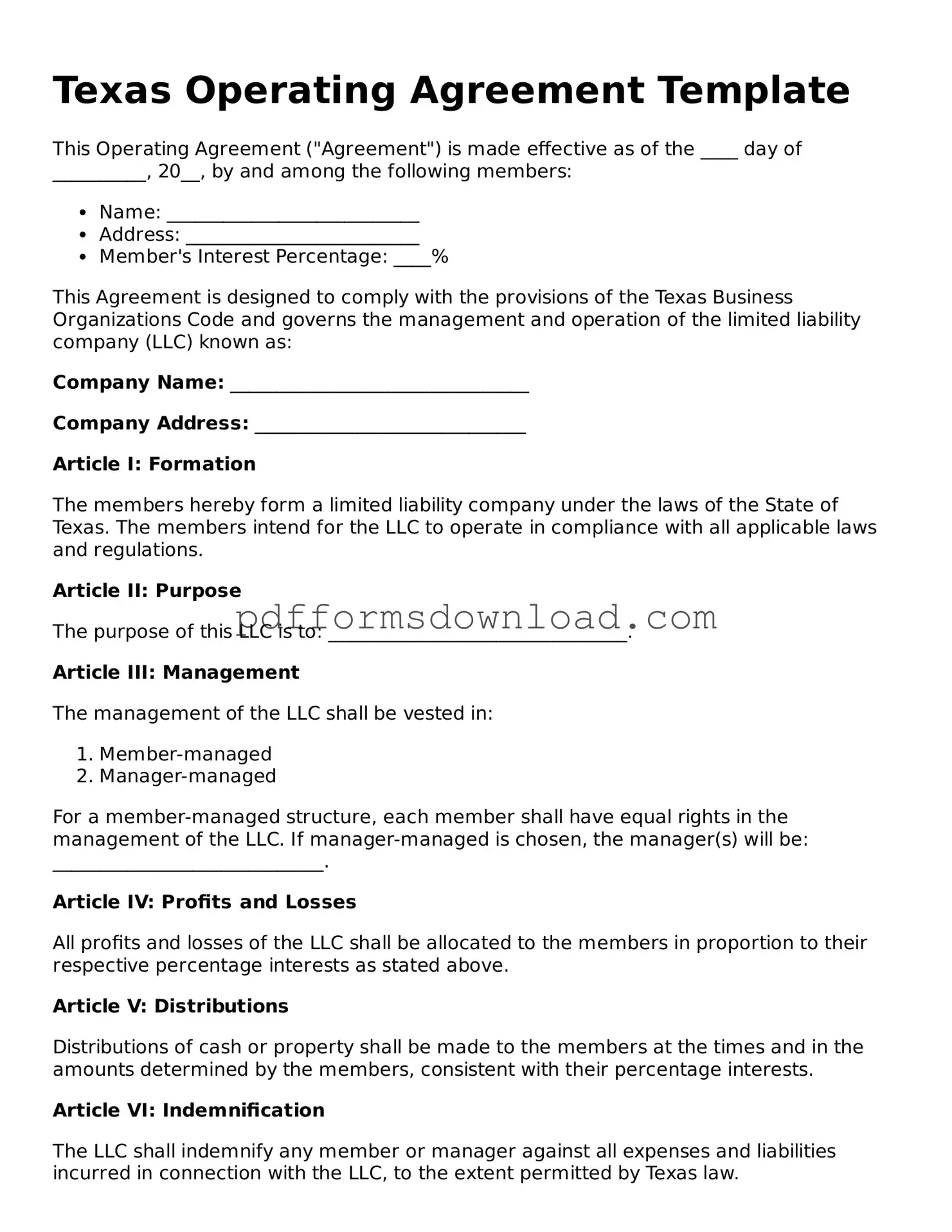What is a Texas Operating Agreement?
A Texas Operating Agreement is a legal document that outlines the management structure and operating procedures of a limited liability company (LLC) in Texas. It serves as a foundational contract among the members of the LLC, detailing their rights, responsibilities, and obligations. This agreement is crucial for establishing clear expectations and minimizing potential disputes among members.
Is an Operating Agreement required in Texas?
No, Texas does not legally require LLCs to have an Operating Agreement. However, having one is highly recommended. An Operating Agreement can provide clarity on the management of the company and help protect the limited liability status of the members. Without it, members may face challenges in resolving disputes or managing the business effectively.
What should be included in a Texas Operating Agreement?
A comprehensive Texas Operating Agreement typically includes several key elements. These include the names and addresses of the members, the purpose of the LLC, the management structure (whether member-managed or manager-managed), voting rights, profit distribution, and procedures for adding or removing members. Additionally, it may outline how to handle disputes and the process for dissolving the LLC if necessary.
Can members modify the Operating Agreement?
Yes, members can modify the Operating Agreement. Changes can be made through a formal amendment process, which should be documented in writing and agreed upon by all members. This flexibility allows the agreement to evolve as the business grows or as members' needs change. It is important to follow any specific procedures outlined in the original agreement for making amendments.
How does an Operating Agreement protect members?
An Operating Agreement helps protect members by clearly defining their rights and responsibilities. It establishes rules for decision-making and profit-sharing, which can prevent misunderstandings and conflicts. Furthermore, having a well-drafted Operating Agreement can reinforce the limited liability status of the LLC, ensuring that members' personal assets remain protected from business liabilities.
Is it necessary to file the Operating Agreement with the state?
No, it is not necessary to file the Operating Agreement with the state of Texas. The Operating Agreement is an internal document that governs the LLC's operations. However, it is advisable to keep a copy of the agreement with the company's records and to ensure that all members have access to it. This can be crucial in case of disputes or legal issues.
Where can I find a template for a Texas Operating Agreement?
Templates for Texas Operating Agreements can be found through various legal websites, business formation services, and even some local law firms. While these templates can provide a useful starting point, it is wise to tailor the document to fit the specific needs of your LLC. Consulting with a legal professional can ensure that the agreement complies with Texas law and adequately protects the interests of all members.
